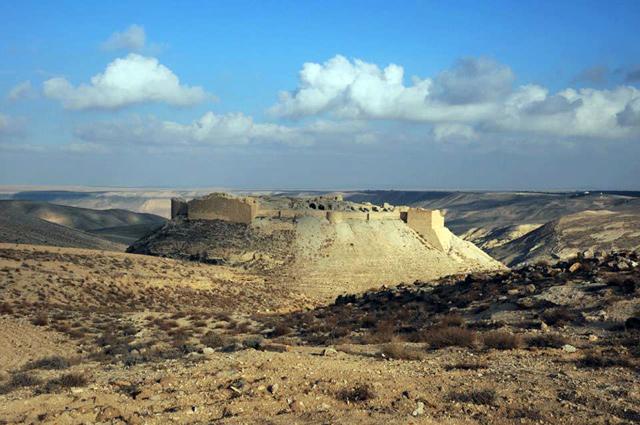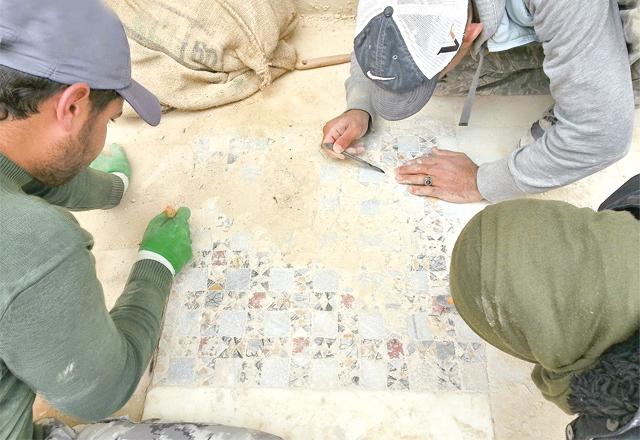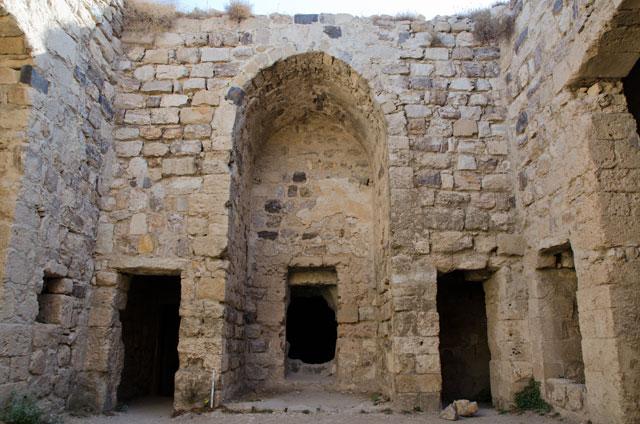You are here
'Archaeologists in Near East are mediators between cultures of past and present'
By Saeb Rawashdeh - Jul 24,2018 - Last updated at Jul 24,2018

The Shobak Castle seen from surrounding hills (Photo courtesy of Anna Marx)
AMMAN — Over a century ago, Italian historian Benedetto Croce (1866-1952) wrote that "if authentic, the history of any period is always contemporary", a motto that could be applied to archaeology, said Professor Guido Vannini from the University of Florence.
Vannini, who started leading the mission in Jordan's Medieval Petra from 1986, deals with archaeology of Crusader-Ayyubid settlement in Transjordan circa 12-13th centuries.
The mission gathered results about the history of the territory covering Petra, Shobak and Karak, showing how mediaeval origins represent a significant part of Jordanian cultural roots, the archaeologist said, noting that the operational practices and objectives of the team actually cover an entire historical region of Jordan.
"The reconstruction of an unsuspected Crusader settlement system [the classic feudal 'incastellamento'] of the entire Petra Valley, focused on the pivotal castles of Wu'ayra and Al Habis, but not only," Vannini said, noting that in Shobak, researchers discovered structures of the princely palace of Crac de Montréal, established by Baldwin I (1098-1100), which was based on a monumental fortified settlement from the Romano-Byzantine Limes Arabicus.
"The 'discovery' of a new, unexpected, refined Islamic town, Shobak [who thus came to be part of the refounded Islamic empire by Saladin] rose to the rank of the regional capital in Ayyubid and early Mamluk age [between the end of 12th and of 14th centuries]," Vannini elaborated, adding "an authentic production structure that could be defined as 'industrial' [textiles, soap, sugar] was also discovered in the area outside the castle".
This is a location that highlights a true political intelligence (the lintel of the Ayyubid palace represents a sort of promoted interaction between the Islamic and Arab-Christian components of the territory: still a lesson for our times) and the start of a”new” history for the entire south-Jordanian region, since then no longer peripheral (as it was in the 11th century). Archaeology managed to re-discover an Islamic capital-city town established by Saladin and forgotten by the history, Vannini emphasised.
"The mission's new goal is now to investigate the problem of the 'disappearance' of this rich, important city that flourished at least until the end of the 14th century," the Italian researcher underlined, voicing his interest to study and date forms and epoch of its radical crisis and Shobak's regression to a village, as it could represent a concrete case of the eclipse and the crisis of the late mediaeval Arab society, up to the Ottoman hegemony.
The recent consolidation of a structural crisis that hit the Mediterranean societies of the Near East, also poses the question of how to perform more efficiently, and in a cultural context of higher ethics, the veteran scholar said, adding that the sector of the archaeological heritage is today at the centre of an unprecedented attack that, dramatically demonstrates once again "the powerful contemporary role of archaeological science”.
According to Vannini, archaeologists working in the Near East are a kind of cultural mediators between the cultures of the past and those of the present, and, at the same time, mediators between European culture and that of their host countries.
"We must recognise that Jordan occupies — in this perspective — an advanced position also due to its solid network of international academic collaborations and to the prestige of its institutions," Vannini concluded.
Related Articles
AMMAN — The Italian archaeological mission to Jordan's Medieval Petra recently concluded its 2018 excavation season in Al Jaya village
AMMAN — In 1189, after the victorious siege which started in 1187 and the crusaders’ fall of Hatting, Saladin came into possession of the ca
AMMAN — Despite being one of the best-preserved crusader castles in Jordan and the Near East, Karak Castle is “certainly one of the least st













